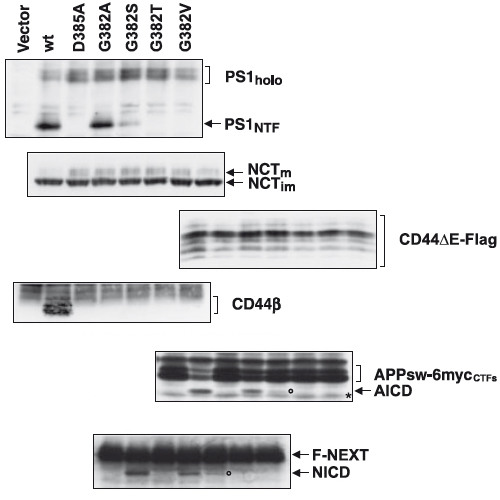Requirement for Small Side Chain Residues within the GxGD-Motif of Presenilin for gamma-Secretase Substrate Cleavage
15-Dec-2009
Journal of Neurochemisty, 2009, 112, 4, 940 - 50 published on 15.12.2009
Journal of Neurochmisry, online article
γ-Secretase is a pivotal intramembrane-cleaving protease complex and important drug target for Alzheimer's disease. The protease not only releases small peptides, such as the amyloid-β peptide, which drives Alzheimer's disease pathogenesis, but also intracellular domains, which can have critical functions in nuclear signaling. Unlike typical aspartyl proteases, γ-secretase contains a non-classical GxGD active site motif in its catalytic subunit presenilin (PS) 1 or PS2. It is not known whether both glycines are of similar functional relevance and why the glycine residues are invariant elements of the motif. Here we identify the N-terminal glycine of the GxGD motif in PS1, G382, as a critical residue of the active site domain of γ-secretase. Substitution of G382 by a number of different amino acids abrogated γ-secretase activity. Only the smallest possible G382A substitution allowed substantial γ-secretase activity. Depending on the substrate, however, the presence of G382 could become even an absolute functional requirement of γ-secretase. Very similar results were obtained for the C-terminal glycine residue (G384) of the GxGD motif. Our data thus identify a requirement for small side chain residues in the active site domain of γ-secretase and suggest that the glycines of the GxGD motif could be evolutionary conserved to allow cleavage of all possible γ-secretase substrates, including those, which are highly sensitive to minimal alteration of the PS active site domain. These findings broaden our understanding of γ-secretase substrate recognition and cleavage, which may prove crucial for therapeutic targeting of the enzyme.











